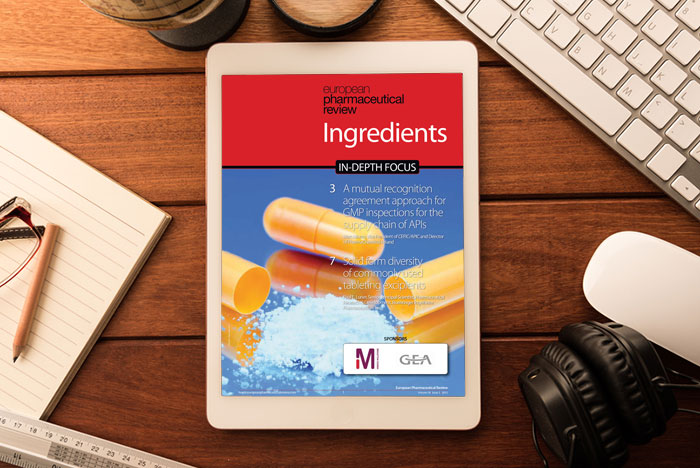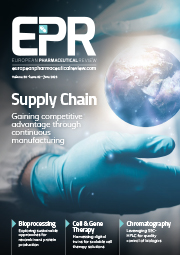Ingredients In-Depth Focus 2013
Posted: 13 June 2013 | European Pharmaceutical Review
In this Ingredients In-Depth Focus: Revisiting a mutual recognition agreement approach for GMP inspections to secure the safety of the supply chain of APIs; Solid form diversity of commonly used tableting excipients and its impact…


- Revisiting a mutual recognition agreement approach for GMP inspections to secure the safety of the supply chain of APIs
(Matt Moran, Vice President of CEFIC/APIC and Director of PharmaChemical Ireland)
The European Fine Chemicals Group (EFCG), The Active Pharmaceutical Ingredients Committee (APIC) of CEFIC and The Society of Chemical Manufacturers and Affiliates (SOCMA) have come together to propose a global harmonisation of the rules and regulations governing the manufacture of active pharmaceutical ingredients (APIs) that will level the worldwide playing field and ensure that the safety and quality of APIs and medicines containing them meet the high standard (ICH Q7A) recognised by the developed economies. This should be achieved via mandatory inspections of all global API manufacturers via a Mutual Recognition Agreement (MRA) approach and managed by the National Regulatory Authorities in order to share scarce inspection resources and to avoid the present duplication… - Solid form diversity of commonly used tableting excipients and its impact
(Paul E. Luner, Senior Principal Scientist, Pharmaceutical Research & Development, Boehringer Ingelheim Pharmaceuticals Inc.)
Many excipients used in the manufacture of solid oral dosage forms are materials that can exist in different solid phases, such as polymorphs, hydrates, amorphous forms or mixed phases. Compendial and manufacturer specifications are typically focused on particulate and chemical attributes. However, variation of excipients at the molecular and supramolecular level can impact their performance characteristics, function and formulation manufacturability. The excipient manufacturing process can also be a factor determining phase composition and increases the potential for differences in performance characteristics among materials from different manufacturers. Although the impact of process induced phase transformation as a consequence of dosage form manufacture has been well noted for APIs, less attention has been devoted to understanding the same phenomena with excipients, which often make up the major proportion of the tablet. This article highlights the diversity of solid form variation in several key tableting excipients, discuss their transformation and differentiation by physical characterisation methods and provide a framework for understanding their potential phase compositions. Examples of how variation in solid state phase composition and the impact of process induced transformation for specific excipients influences performance properties such as environmental physical stability, compression characteristics and dissolution are highlighted.
This Ingredients In-Depth Focus is restricted - login or subscribe free to access


Why subscribe? Join our growing community of thousands of industry professionals and gain access to:
- bi-monthly issues in print and/or digital format
- case studies, whitepapers, webinars and industry-leading content
- breaking news and features
- our extensive online archive of thousands of articles and years of past issues
- ...And it's all free!
Click here to Subscribe today Login here
Issue
Related topics
Related organisations
Boehringer Ingelheim, GEA Group, Merck Millipore, PharmaChemical Ireland




